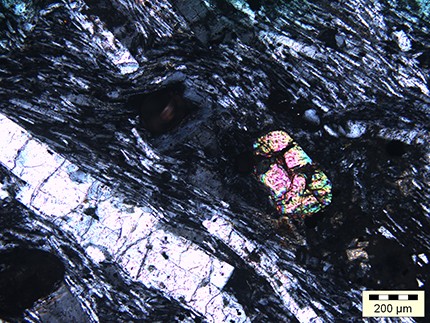By Ana Verayo, | February 03, 2017

Zircon minerals are often found in granite containing uranium, thorium and lead. (Wits University)
Scientists say that an ancient "lost continent" is hidden underneath the island of Mauritius in the Indian Ocean.
An international team of scientists has determined that the small island nation is apparently a continental fragment that broke off from another island nation, Madagascar. Both of them were originally part of the supercontinent Gondwana that has separated into Africa, India, Australia, and Antarctica around 200 million years ago.
Like Us on Facebook
Scientists also identified some mineral zircon pieces that are found on the island, revealing crucial clues about the continental origins of Mauritius.
According to Lewis Ashwal from the Wits University in South Africa, Earth is made of two components, the land which is the old part and the oceans which are young. There are rocks found on continents that can reach up to 4 billion years old, however, the oceans only hold new rock formations.
Ashwal explained that since Mauritius is an island, all rocks found on that island are younger than nine million years old however, we were surprised to see zircons as old as three billion years. This discovery suggests that this zircon age reveals older crust material underneath Mauritius that may have been originally from an ancient continent.
These primordial zircons were recovered by scientists along the beach shores of Mauritius. However, some scientists have refuted this discovery, suggesting that this evidence may have been transported by wind elements or weather systems, or even human influence.
Researchers obtained these zircon samples from a rock layer called trachyte. It is estimated to be 6 million years old. Ashwal explained that these new results reveal that the island of Mauritius did not just split from the ancient super continent, Gondwana. This island was originally part of a complex splintering process from continental fragments of crust in various sizes, that has been drifting around the Indian Ocean basin.
This new study was published in the journal Nature Communications.
-
Use of Coronavirus Pandemic Drones Raises Privacy Concerns: Drones Spread Fear, Local Officials Say

-
Coronavirus Hampers The Delivery Of Lockheed Martin F-35 Stealth Fighters For 2020

-
Instagram Speeds Up Plans to Add Account Memorialization Feature Due to COVID-19 Deaths

-
NASA: Perseverance Plans to Bring 'Mars Rock' to Earth in 2031

-
600 Dead And 3,000 In The Hospital as Iranians Believed Drinking High-Concentrations of Alcohol Can Cure The Coronavirus

-
600 Dead And 3,000 In The Hospital as Iranians Believed Drinking High-Concentrations of Alcohol Can Cure The Coronavirus

-
COVID-19: Doctors, Nurses Use Virtual Reality to Learn New Skills in Treating Coronavirus Patients







